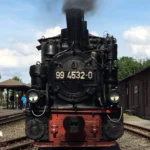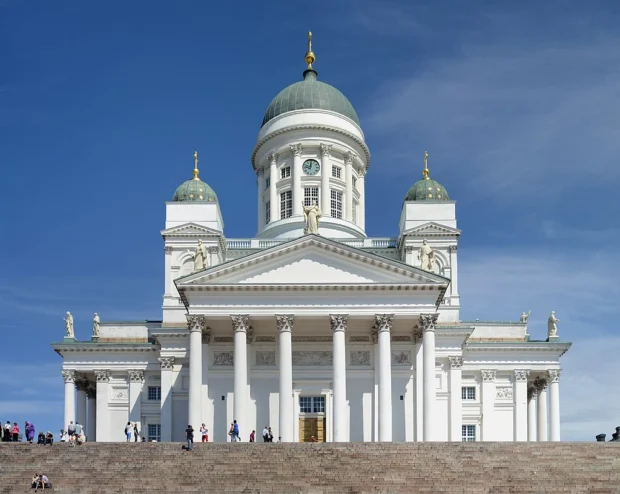Helsinki, the capital of Finland, offers a rich mix of culture, design, and nature. Situated by the Baltic Sea, this city is known for its clean streets, interesting architecture, and efficient public transport. Whether you arrive by plane or train, you will find it easy to move around. This guide will help you understand the best places to see, the foods to try, and how to use Helsinki’s transport system like a local. Along the way, I’ll share some small stories and local customs that make Helsinki special.
Table of Contents
When thinking about Northern capitals, don’t miss reading about Oslo’s unique mix of nature and culture to complement your Helsinki visit.

Famous Sights and Surprising Corners in Helsinki
When you walk around Helsinki, you will notice the blend of old and new buildings. The Senate Square is one of the key landmarks. It has a large white cathedral called Helsinki Cathedral, which looks beautiful especially when the sun sets. Nearby, you can see the Government Palace and the University of Helsinki’s old main building. This area shows Finland’s past and its ties to Russia and Sweden.

Just a short walk from the square is Market Square (Kauppatori), a lively place where locals sell fresh fish, berries, and traditional Finnish snacks. I once chatted with a vendor selling “karjalanpiirakka,” a rye pastry filled with rice porridge. It’s a must-try! Helsinki’s harbor is also right here, where you can take a ferry to Suomenlinna, a sea fortress built in the 18th century. Suomenlinna offers calm nature trails and historical walls to explore.
Taking a ferry from Market Square to Suomenlinna lets you step into Helsinki’s rich maritime history and serene island views; learn more about this floating fortress here.

Another architectural delight is the Temppeliaukio Church, known as the Rock Church. This place is literally carved out of solid rock, with a copper dome letting in natural light. Inside, the acoustics are excellent, making it a popular place for concerts. Most tourists miss the small park behind it, perfect for a quiet moment or picnic.

Where to Taste Finnish Flavors and Neighborhoods to Stay
Helsinki’s food scene has grown a lot. Traditional Finnish food is simple and fresh. In the Kallio district, you can find small cafes selling “lohikeitto” (salmon soup) and “mustikkapiirakka” (blueberry pie). For a full experience, visit a “k-market” or “s-market” grocery to see local products and get ideas for snacks. If you want to eat like a local, try rye bread with cheese or reindeer meat dishes. For coffee lovers, Finland is one of the highest coffee-consuming countries in the world. So, don’t miss stopping by a café for a “kahvi” (coffee).

For accommodation, consider staying near the city center if you want to be close to museums and shops. Areas like Kamppi or Punavuori offer good access to public transport and many restaurants. If you prefer a quieter place, the district of Töölö has parks and a more relaxed atmosphere, yet the city center is just a short tram ride away.

Efficient Public Transport: From Airport to City and Beyond
Helsinki’s public transport is a model of efficiency. The Helsinki-Vantaa Airport connects directly to the city center by train. You can catch the I or P train from the airport station to Helsinki Central Railway Station. The ride takes about 30 minutes and costs around 5 euros. Once in the city, trams and buses cover most areas.

Trams are a favorite for both locals and visitors. Lines 3 and 4 run a loop in the city center and to neighborhoods like Kallio and Töölö. Tickets are valid for all types of transport and can be bought using the HSL mobile app or ticket machines at stops. When you board, remember to validate your ticket if necessary; many stops have machines where you tap your card or phone. A single ticket lasts 80 minutes, allowing transfers between buses, trams, and metro.

The metro connects from the center to eastern suburbs and the airport area. If you plan to visit Suomenlinna, take tram number 4 to the ferry terminal. For those interested in cycling, Helsinki has many bike lanes and city bike rentals available from spring to autumn. The city promotes sustainable transport, so walking and biking are great ways to see the environment.

Understanding Finnish Culture and Customs
Finns are known for their straightforwardness and respect for personal space. When meeting someone, a firm handshake and eye contact are appreciated, but avoid standing too close. It’s common to greet with “Hei” (Hi) or say “Kiitos” (Thank you) often to show politeness. If you want to say “Good day,” you can say “Hyvää päivää.”

Remember, Finns appreciate silence and do not usually engage in small talk with strangers on public transport. This is not rudeness-it is a cultural norm valuing calm and privacy. When invited to a Finnish home, it is polite to remove your shoes at the door. Also, punctuality is important; being a few minutes early is better than being late.
Public saunas are another deep-rooted tradition. Many locals visit saunas regularly to relax and socialize quietly. If you get a chance to enter one, remember to shower before and don’t bring strong perfumes or loud conversation inside.
Hidden Stories in Helsinki’s Streets and Buildings
While walking in the city, you might notice small statues and plaques that tell stories from Helsinki’s past. For example, the “Three Smiths Statue” near the Market Square symbolizes strong labor traditions. Nearby, the old railway station building impresses with its clock tower and stone figures holding glowing spheres. This station was completed in 1919 and remains a proud symbol of the city’s growth.
One quirky fact: Helsinki’s design district, especially around Punavuori, was once an area of small factories and workshops. Now, it is full of galleries, design shops, and cozy coffee places where you can find handmade Finnish crafts. I met a local designer who explained how Finnish design often combines simplicity with natural materials, reflecting the country’s forests and lakes.
Also, keep an eye out for the wooden houses in Ullanlinna. These old wooden buildings stand out among the modern constructions and tell stories of Helsinki’s architecture before the city expanded rapidly in the 20th century.
How to Use Helsinki Transport Cards and Tickets Smartly
When traveling in Helsinki, buying a single ticket every time can add up. The HSL card or mobile app offers options for day passes or multi-day tickets that save money if you use public transport several times. You can top up the card at stations, kiosks, or online. Remember that tickets issued via the app include all transport modes, so no need to buy separate ones for buses or trams.
If you arrive very early or late at the airport, check the train schedules in advance, as services may be less frequent at night. The bus line 615 and 415 also connect the airport to the city center but take longer than the train. Using the journey planner on the HSL website or app will give you accurate routes and times.
Final Thoughts on Helsinki’s Urban Design and Comfort
Helsinki is not just functional but smartly designed for everyday life. Wide sidewalks, clear signage, and environmentally friendly transport make it easy to enjoy the city without stress. In the summer, parks and waterfront areas fill with people enjoying long daylight hours. In winter, the city lights and cozy cafes create a warm atmosphere despite the cold.
From the moment I stepped out of the airport train station into Helsinki’s clean air, I felt the city’s rhythm was calm yet alive. Whether you want to appreciate architecture, taste authentic Finnish dishes, or simply walk by the sea, Helsinki offers a balanced and thoughtful urban experience.

- Helsinki July 2013-27a by Alvesgaspar on Wikimedia Commons – cc by-sa 3.0
- Picnic in Suomenlinna. Helsinki, Finland by Ввласенко on Wikimedia Commons – cc by-sa 3.0
- Catedral Luterana de Helsinki, Finlandia, 2012-08-14, DD 01 by Diego Delso on Wikimedia Commons – cc by-sa 3.0
- Interior of Temppeliaukio Church 2019 by Link on Wikimedia Commons – cc by 2.5
- Helsinki Market Square September 2014 by Ypsilon from Finland on Wikimedia Commons – cc0
- Estatua de Johan Ludvig Runeberg, Esplanadi, Helsinki, Finlandia, 2012-08-14, DD 01 by Diego Delso on Wikimedia Commons – cc by-sa 3.0
- National Museum of Finland – panoramio by Ainar Riigov on Wikimedia Commons – cc by 3.0
- Ateneum in April by JIP on Wikimedia Commons – cc by-sa 4.0
- Kiasma – Museum of Modern Art – panoramio by Aulo Aasmaa on Wikimedia Commons – cc by 3.0
- Cloth and Food Stores at Seurasaari by Pöllö on Wikimedia Commons – cc by 3.0
- 14-08-13-helsinki-RalfR-N3S 1244a-006 by Ralf Roletschek on Wikimedia Commons – gfdl 1.2
